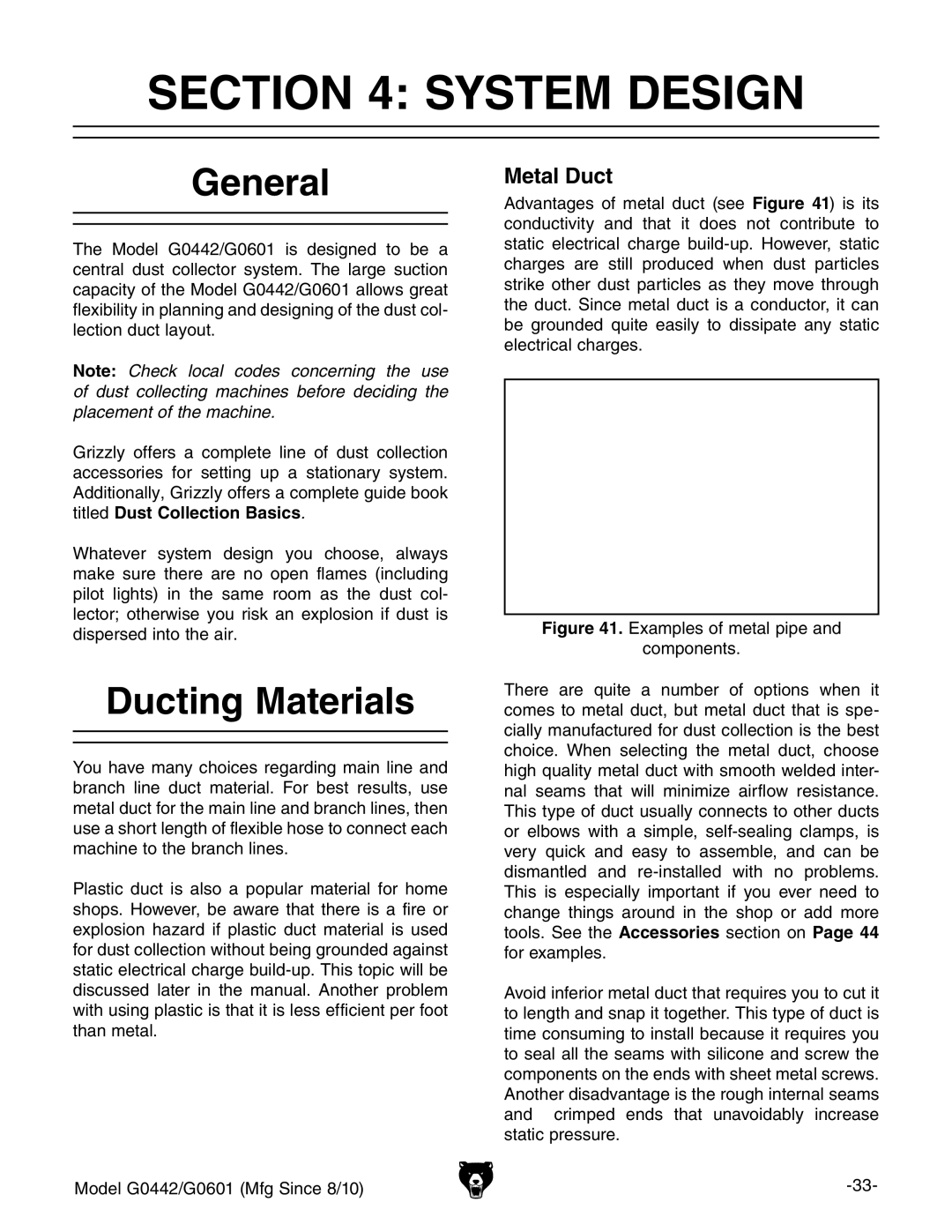General
The Model G0442/G0601 is designed to be a central dust collector system. The large suction capacity of the Model G0442/G0601 allows great flexibility in planning and designing of the dust col- lection duct layout.
Note: Check local codes concerning the use of dust collecting machines before deciding the placement of the machine.
Grizzly offers a complete line of dust collection accessories for setting up a stationary system. Additionally, Grizzly offers a complete guide book titled Dust Collection Basics.
Whatever system design you choose, always make sure there are no open flames (including pilot lights) in the same room as the dust col- lector; otherwise you risk an explosion if dust is dispersed into the air.
Ducting Materials
You have many choices regarding main line and branch line duct material. For best results, use metal duct for the main line and branch lines, then use a short length of flexible hose to connect each machine to the branch lines.
Plastic duct is also a popular material for home shops. However, be aware that there is a fire or explosion hazard if plastic duct material is used for dust collection without being grounded against static electrical charge build-up. This topic will be discussed later in the manual. Another problem with using plastic is that it is less efficient per foot than metal.
Model G0442/G0601 (Mfg Since 8/10)
Metal Duct
Advantages of metal duct (see Figure 41) is its conductivity and that it does not contribute to static electrical charge build-up. However, static charges are still produced when dust particles strike other dust particles as they move through the duct. Since metal duct is a conductor, it can be grounded quite easily to dissipate any static electrical charges.
Figure 41. Examples of metal pipe and
components.
There are quite a number of options when it comes to metal duct, but metal duct that is spe- cially manufactured for dust collection is the best choice. When selecting the metal duct, choose high quality metal duct with smooth welded inter- nal seams that will minimize airflow resistance. This type of duct usually connects to other ducts or elbows with a simple, self-sealing clamps, is very quick and easy to assemble, and can be dismantled and re-installed with no problems. This is especially important if you ever need to change things around in the shop or add more tools. See the Accessories section on Page 44 for examples.
Avoid inferior metal duct that requires you to cut it to length and snap it together. This type of duct is time consuming to install because it requires you to seal all the seams with silicone and screw the components on the ends with sheet metal screws. Another disadvantage is the rough internal seams and crimped ends that unavoidably increase static pressure.
-33-

